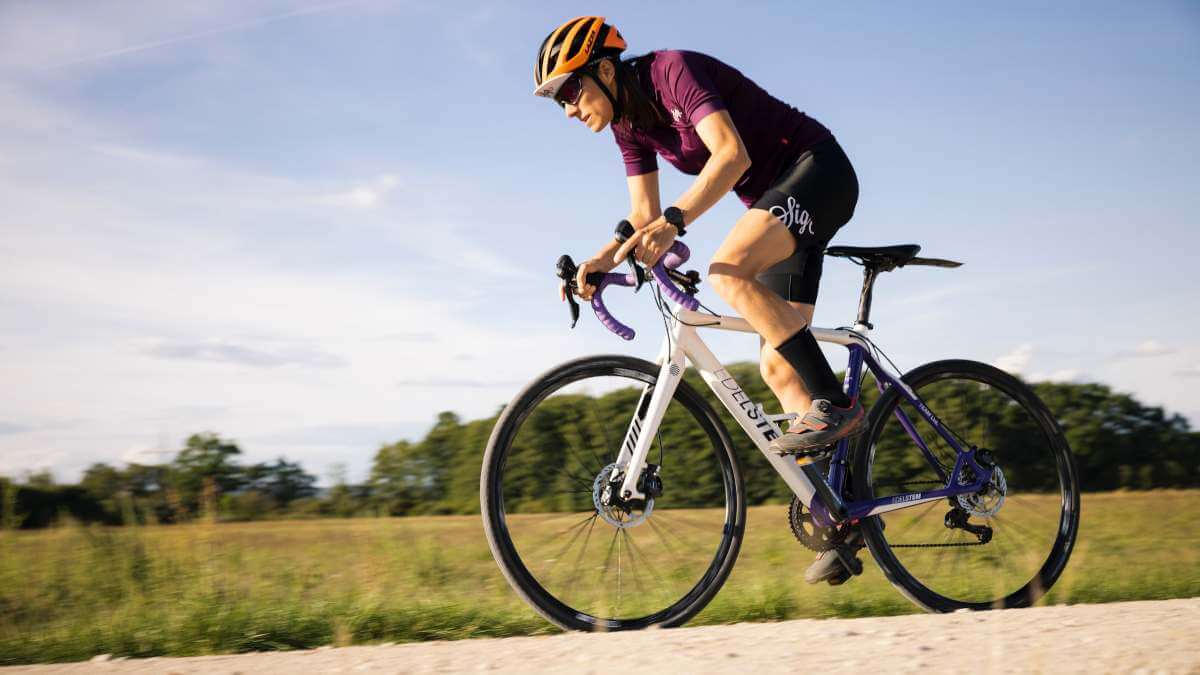Cycling endurance is a fundamental principle for every endurance cyclist trying to maximize their performance. Yet, often, it takes a lot of time for athletes to reach the endurance level they desire. This is especially true for newbie athletes. However, by applying scientific methods — and following a targeted training plan — cyclists can build endurance much faster; and, much more efficiently.
A 7-step guide to building cycling endurance
So, to get straight to the point, here’s how athletes can reach their cycling endurance goals, in 7 sure steps.
1. Identify the FTP and personal endurance zones
We often highlight, in our articles, the importance of the ergometric evaluation of athletes. So, in this article, too, it’s necessary to mention that all endurance cyclists should perform an aerobic fitness assessment test. There’s no other way to determine their FTP and their personal training zones. Furthermore, based on the data from their assessment, they’ll be able to adapt their training to their needs, for achieving optimum results.
2. Incorporate low-intensity long rides in the training plan
Low-intensity long rides are among the most popular training methods to build a good fitness base. That’s why athletes should perform low-intensity continuous cycling exercises — longer than 2 hours, at 60-75% FTP. Training in this method will help athletes:
- improve their cardiovascular function,
- increase their thermoregulatory ability, and
- enable mitochondria to produce energy in the muscle cells.
3. Train in long intervals
In addition to low-intensity and long-term training, cyclists should also exercise in higher training areas. In this way, their body will be able to make the necessary adjustments, to improve endurance cycling. Long interval training — lasting 4-10 minutes, at 108-125% of FTP — is a good example. As to bodily adaptations, when training in long intervals, athletes should expect an increase in maximum power output and power corresponding to FTP.
4. Utilize polarized training
Polarized training is not a new method, but it’s certainly been gaining ground in the last few years. Especially among athletes who have limited time to train in their daily agendas. So, what is the polarized training method about? It’s about distributing a specific percentage of the athlete’s training load to exercises of high or low intensity.
To explain how this goes, either 80% of the training should occur at low intensities, or 20% at high intensities. At the same time, moderate intensities are excluded from the athlete’s training. In other words, polarized training is a combination of the two training methods we mentioned earlier.
5. Keep up with strength workouts
Another way that will undoubtedly help athletes build cycling endurance is including resistance workouts in their training. This type of training consists of:
- either free weights — or some other external resistance functional training,
- or exercises that make use of ground resistance, such as hill repeats.
In any case, the training load should be executed under the coach’s guidance; not just for achieving the desired results, but also for safety reasons.
6. Focus on nutrition and hydration
Proper nutrition and good hydration are a big chapter in an athlete’s life. And, how could it not be? Training to build cycling endurance requires spending a lot of energy, in order to perform as expected. This means that the body must get all the nutrients it needs, in order to cope with the stress. To that end, every athlete should, ideally, be monitored by a specialized nutritionist, who will also create a personalized nutritional program for them.
7. Include rest days
Believe it or not, rest days are as important as consistency in training. Indeed, they are necessary for the athlete to recover properly. Otherwise, their body will not be able to adapt to the training stimuli of the previous days. What does this mean? That their hard work will not bring the desired results. It also means that they’ll become more susceptible to overtraining syndromes. Therefore, when coaches instruct rest, athletes need to trust them.
Increase cycling endurance with Endogusto
Although the steps we discussed in this article will make the training process more effective, keep in mind that every athlete is unique. Hence, every athlete reacts very differently to training stimuli. That’s why it’s so important for the athlete to find a specialized cycling coach, who will guide them based on their needs and goals.
Taking it a step further, it’s also important for the coach to invest in a wholesome, science-based coaching platform — like Endogusto — that will allow them to implement everything we’ve mentioned here quickly and effectively. To learn more about Endogusto and how it can help improve athletes’ cycling endurance, book a demo with one of our specialists, today!
